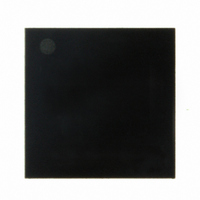TRC103 RFM, TRC103 Datasheet - Page 43

TRC103
Manufacturer Part Number
TRC103
Description
RFIC TRANSCEIVER MULTI-CHANNEL F
Manufacturer
RFM
Series
TRCr
Datasheet
1.TRC103.pdf
(64 pages)
Specifications of TRC103
Frequency
863MHz ~ 960MHz
Data Rate - Maximum
100kbps
Modulation Or Protocol
FSK, OOK
Applications
General Purpose
Power - Output
11dBm
Sensitivity
-112dBm
Voltage - Supply
2.1 V ~ 3.6 V
Current - Receiving
4mA
Current - Transmitting
30mA
Data Interface
PCB, Surface Mount
Antenna Connector
PCB, Surface Mount
Operating Temperature
-40°C ~ 85°C
Package / Case
32-QFN
Lead Free Status / RoHS Status
Lead free / RoHS Compliant
Memory Size
-
Other names
583-1095-2
6.0 TRC103 Design In Steps
Designing a TRC103 into an application consists of seven steps:
The details of each of these steps are discussed below.
6.1 Determining Frequency Specific Hardware Component Values
6.1.1 SAW Filters and Related Component Values
RFM offers a low-loss SAW RF filter for each of the TRC103’s operating bands. The part numbers for these SAW
filters and the values of the related tuning components are given in Table 53 (see Figure 2 for component loca-
tion). The SAW filters are designed to take advantage of the TRC103’s differential output to achieve low insertion
loss and high out-of-band rejection.
6.1.2 Voltage Controlled Oscillator Component Values
The TRC103 VCO requires four external components for operation, two tank circuit inductors and two power sup-
ply decoupling capacitors. It is important to use high-Q chip inductors in the tank circuit. This assures low phase
noise VCO operation and minimum interference from signals near the TRC103’s operating frequency due to
www.RFM.com
©2009-2010 by RF Monolithics, Inc.
1. Select the frequency band for operation: 863-870, 902-928 or 950-960 MHz. This allows the frequency-
2. Select the modulation type, FSK or OOK, and the RF data bit rate. This allows the configuration of the
3. Select the radio regulation under which to operate. This allows the transmitter power level to be deter-
4. Select the frequency channel or channels to be used. This allows the configuration values for the fre-
5. Select the operating mode to be used: continuous, buffered or packet. For continuous mode, determine if
6. If needed, prepare a battery power management strategy and determine when various system radios may
7. Based on the selections and determinations above, compile the configuration data to be stored in the host
specific hardware components for the TRC103 to be determined. These include the SAW filter and its
matching components and the VCO tank inductors.
TRC103 on-chip filters, the data and clock recovery circuitry and related parameters to be determined.
mined.
quency synthesizer to be tabulated.
the TRC103 internal data and clock recovery feature will be used. This allows the configuration of a num-
ber of mode-related registers in the TRC103 to be determined. For packet or buffered mode, select the
data encoding, preamble length, start pattern, FIFO length and the mapping of the TRC103 host proces-
sor interrupts. For packet mode, select packet filtering options (address, CRC, etc.). From these deci-
sions, values for the related configuration registers in the TRC103 can be determined.
be configured for low power consumption.
microcontroller to support TRC103 operation.
1. XTL1020P crystal recommended as frequency reference for all operating bands.
2. Bead is Fair-Rite 2506033017Y0 or equivalent.
863-870 MHz
902-928 MHz
950-960 MHz
E-mail:
Band
1
info@rfm.com
SAW Filter
RF3501E
RF2040E
RF3601E
Technical support +1.800.704.6079
bead
bead
bead
L1
2
2
2
Table 53
L2 & L3
8.2 nH
8.2 nH
6.8 nH
DNP
DNP
DNP
C4
100 nH
2.7 nH
4.7 nH
L7
3.3 nH
4.7 nH
3.9 nH
L8
9.0 pF
6.8 pF
DNP
C16
1.8 pF
1.5 pF
1.5 pF
TRC103 - 12/15/10
C17
Page 43 of 64

















